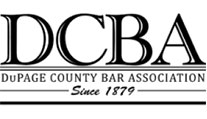Are Passive Alcohol Sensors Legal at Illinois Traffic Stops?
Posted on December 04, 2025
Illinois DUI: Interlock Compliance and False Violations
Posted on November 07, 2025
Challenging Breathalyzer Tests Over Illnesses or Medications
Posted on September 19, 2025
Can a BAIID Violation Delay Your Full License Reinstatement?
Posted on August 12, 2025
Are Women at a Greater Disadvantage When Charged with DUI?
Posted on February 21, 2025
Is There Help Available For Those Who Cannot Afford a BAIID?
Posted on January 22, 2025
What is the Process for License Reinstatement After an IL DUI?
Posted on December 11, 2024
When Is a BAIID Required After a DUI Conviction in Illinois?
Posted on November 13, 2024
DUI if Your BAC is Below the Legal Limit in Illinois
Posted on March 15, 2024
Is It Possible to Fight a DUI Charge in Illinois?
Posted on November 07, 2023
Understanding Reasonable Suspicion in the Context of a DUI Traffic Stop
Posted on May 11, 2023
What is the "Rising Blood Alcohol" Defense in a DUI Case?
Posted on February 14, 2023
Are Field Sobriety Tests an Accurate Indicator of Intoxication?
Posted on December 12, 2022
Can I Get Out of a Second DUI?
Posted on October 26, 2022
Can Being on a Specific Diet Cause a False Positive on a Breathalyzer?
Posted on July 19, 2022
What is the Difference Between a Formal and Informal Secretary of State Reinstatement Hearing?
Posted on May 25, 2022
Refusing a Breath Alcohol Test: Clearing Up the Confusion
Posted on May 11, 2022
Five Facts About Restricted Driving Permits in Illinois
Posted on April 18, 2022
Are Blood Alcohol Tests Always Accurate?
Posted on April 11, 2022
Need to Drive During Your Statutory Summary Suspension? You May Qualify for a Monitoring Device Driving Permit
Posted on March 24, 2022
Can I Get a DUI for Driving Under the Influence of Prescription Medication in Illinois?
Posted on March 11, 2022
Top Questions About Field Sobriety Tests in Illinois
Posted on February 21, 2022
Lost Your License but Need to Drive? Consider a Restricted Driving Permit
Posted on December 27, 2021
Your Guide to Breathalyzer Tests in Illinois DUI Cases
Posted on November 23, 2021
You Can Still Be Charged with DUI for Driving High in Illinois
Posted on October 26, 2021
Will I Go to Jail for a DUI in Illinois?
Posted on September 28, 2021
How Does a High BAC Impact DUI Sentencing in Illinois?
Posted on August 23, 2021
4 Things to Know About Statutory Summary Suspensions in Illinois
Posted on August 09, 2021
How Can I Prepare for my Formal License Reinstatement Hearing?
Posted on July 23, 2021
How Can I Get Out of a DUI in Illinois?
Posted on July 09, 2021
What Are the Zero Tolerance/Underage Drinking Laws in Illinois?
Posted on June 07, 2021
What Is the Lookback Period for DUIs in Illinois?
Posted on April 30, 2021
Three Things You Did Not Know About a First-Time DUI Offense in Illinois
Posted on March 15, 2021
Four Reasons to Hire a DUI Defense Lawyer for an Illinois Drunk Driving Case
Posted on February 26, 2021
What Is the Difference Between Formal and Informal DUI Hearings in Illinois?
Posted on February 16, 2021
Four Quick Facts About Reinstating Your License After an Illinois DUI
Posted on January 29, 2021
Collateral Consequences of an Illinois DUI Conviction
Posted on January 15, 2021
What Are the DUI Penalties for Illinois CDL Holders?
Posted on December 30, 2020
Preparing for Your Driver’s License Hearing with the Secretary of State
Posted on December 17, 2020
Illinois CDL Alcohol-Related Violations
Posted on November 15, 2020
Attending a Secretary of State Hearing
Posted on November 15, 2020
Eligibility for Driver’s License Reinstatement After a DUI
Posted on October 15, 2020
How a Criminal Defense Attorney Can Help Your DUI Case
Posted on August 31, 2020
How a DUI Charge Can Be Elevated to a Felony
Posted on July 14, 2020
The True Impact of a DUI Conviction
Posted on June 30, 2020
What Is an Aggravated DUI?
Posted on June 15, 2020
The Consequences of a DUI Resulting in Injury
Posted on April 24, 2020
Ramifications of a Drunk Driving Conviction
Posted on April 13, 2020
Should I Refuse Testing in a DUI Traffic Stop?
Posted on March 31, 2020
The True Impact of a DUI
Posted on February 19, 2020
Penalties for an Aggravated DUI in Illinois
Posted on December 30, 2019
Regaining Your Driving Privileges After a DUI
Posted on November 15, 2019
Why You Need to Take Your First DUI Charge Seriously
Posted on October 16, 2019
The Impact of Multiple DUI Convictions
Posted on August 27, 2019
Understanding the Legal Ramifications of Refusing a Breathalyzer
Posted on June 27, 2019
How a DUI Conviction Can Impact a Teen
Posted on May 18, 2019
The Implications of an Aggravated DUI Conviction
Posted on April 28, 2019
How to Get Your Driver’s License Reinstated
Posted on April 15, 2019
What are the Penalties for a DUI Arrest in Illinois?
Posted on March 14, 2019
Multiple DUI Charges Bring Serious Potential Penalties
Posted on February 08, 2019
Standardized Field Sobriety Tests in Illinois
Posted on January 15, 2019
The Hidden Costs of DUI Convictions
Posted on November 20, 2018
Ignition Interlock Devices for Driving After a DUI Conviction
Posted on November 06, 2018
DUI With a Child in the Car Carries Extra Penalties in Illinois
Posted on September 24, 2018
The Day After a DUI: Start Preparing Your Defense
Posted on September 12, 2018
Can Police Impound or Seize the Car of a Drunk Driver?
Posted on August 23, 2018
Can a Police Officer Search My Car During a Traffic Stop?
Posted on August 06, 2018
Understanding the Different Types of Breathalyzer Tests in DUI Cases
Posted on July 31, 2018
Medical Marijuana Users: How to Avoid a Possible DUI Charge
Posted on July 10, 2018

 630-448-2001
630-448-2001






